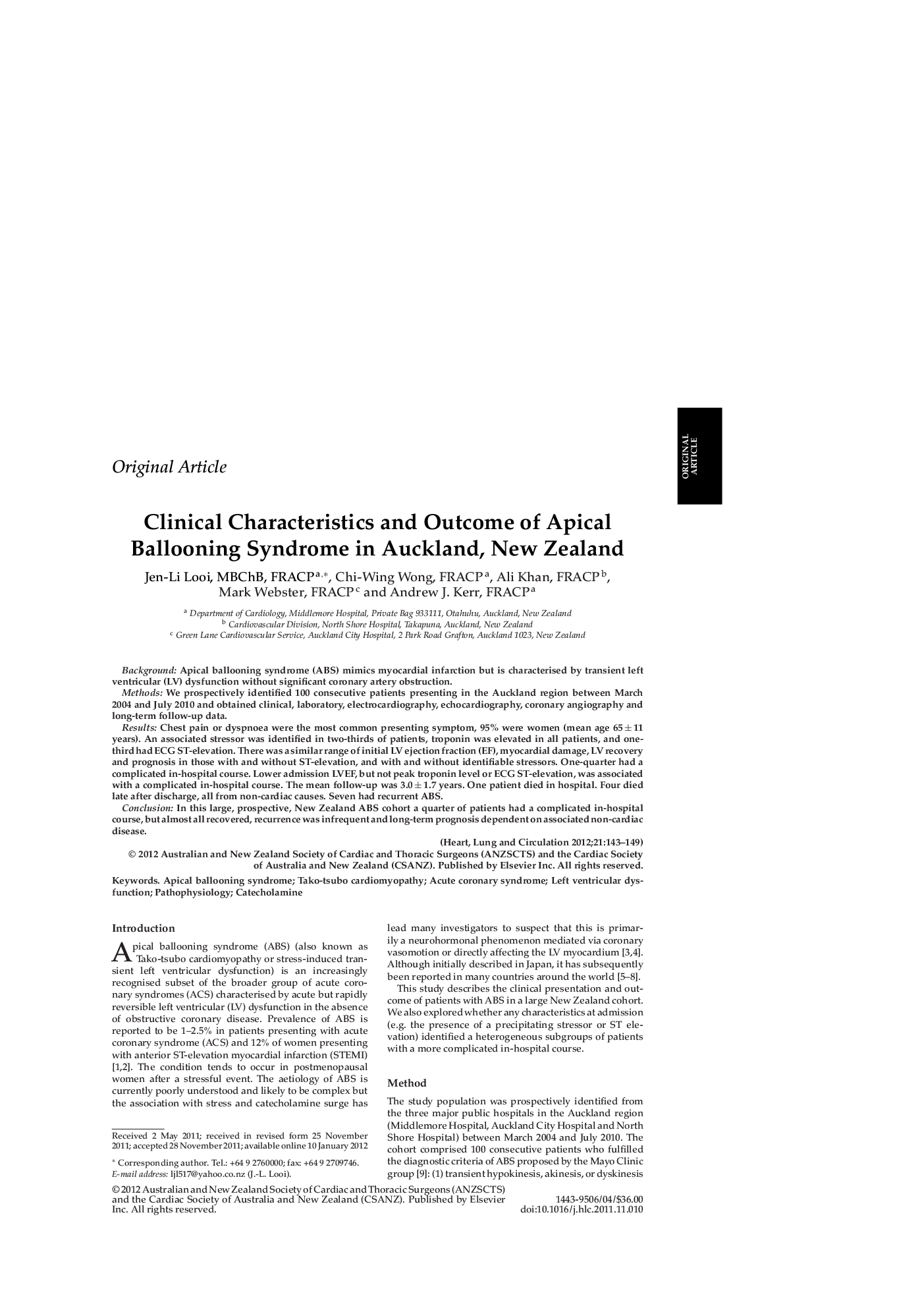| Article ID | Journal | Published Year | Pages | File Type |
|---|---|---|---|---|
| 2918011 | Heart, Lung and Circulation | 2012 | 7 Pages |
BackgroundApical ballooning syndrome (ABS) mimics myocardial infarction but is characterised by transient left ventricular (LV) dysfunction without significant coronary artery obstruction.MethodsWe prospectively identified 100 consecutive patients presenting in the Auckland region between March 2004 and July 2010 and obtained clinical, laboratory, electrocardiography, echocardiography, coronary angiography and long-term follow-up data.ResultsChest pain or dyspnoea were the most common presenting symptom, 95% were women (mean age 65 ± 11 years). An associated stressor was identified in two-thirds of patients, troponin was elevated in all patients, and one-third had ECG ST-elevation. There was a similar range of initial LV ejection fraction (EF), myocardial damage, LV recovery and prognosis in those with and without ST-elevation, and with and without identifiable stressors. One-quarter had a complicated in-hospital course. Lower admission LVEF, but not peak troponin level or ECG ST-elevation, was associated with a complicated in-hospital course. The mean follow-up was 3.0 ± 1.7 years. One patient died in hospital. Four died late after discharge, all from non-cardiac causes. Seven had recurrent ABS.ConclusionIn this large, prospective, New Zealand ABS cohort a quarter of patients had a complicated in-hospital course, but almost all recovered, recurrence was infrequent and long-term prognosis dependent on associated non-cardiac disease.
